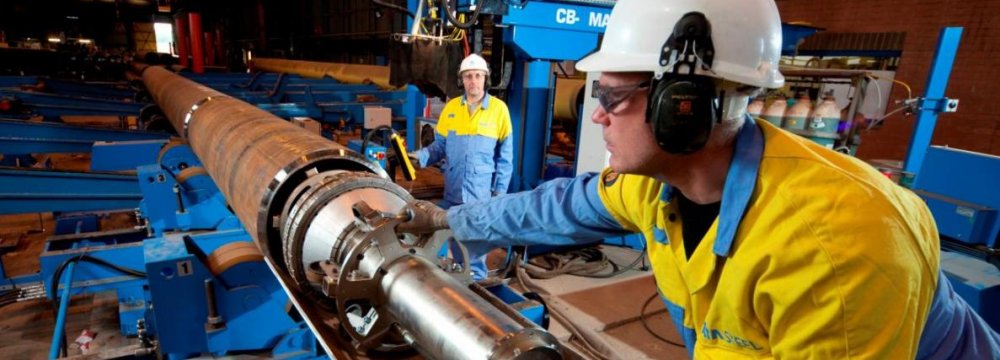The manufacturing sector experienced nearly four percent growth in the first eight months of the current Iranian calendar year (to end March 20), according to statistics released by the Central Bank of Iran (CBI). The government’s so-called “plan of action to exit recession” bill, prepared by President Rouhani’s administration in an attempt to tackle stagflation (recession along with inflation), which has engulfed the economy for about two years, also shows that the government is determined to boost the manufacturing sector.
Despite positive reports by both the government and the private entities, the entrepreneurs are concerned about the future of Iran’s manufacturing sector, fearing that the global fall in oil prices and a probable budget deficit could come in the way of funding major industrial projects, which heavily rely on government support.
Persian daily, Ta’aadol Newspaper has investigated possible ways the government could stimulate the manufacturing sector’s growth, which could in turn boost Iran’s economy that has been severely hit by western sanctions and a drastic plunge in the oil prices.
Exporting Incentives
Alireza Haeri, secretary of the Textile Industries Association, is of the opinion that providing incentives to exporters could encourage production and help boost the manufacturing sector at a time when the manufacturers are struggling to sell their products in the domestic market.
“As the domestic market is faced with various hurdles such as low demand, efforts must be directed towards export,” he said, urging the government to provide exporters with low-interest loans and financial incentives to encourage manufacturers to engage in international markets.
Calling for the government to reduce or eliminate taxes on export, Haeri said the ongoing talks to increase taxes by 23% are “against the government’s anti-recessionary policies.”
The expert also said that the manufacturing sector has not yet received any benefit from the so-called Subsidy Reform Plan, which was passed in 2010 by the previous administration headed by former president Mahmoud Ahmadinejad. The controversial plan aimed to cut the subsidies on food and energy and direct it towards cash payment to people as well as the government’s development projects.
Turning to Small Industries
Haeri also noted that while the government is only focused on large industries to help the country exit recession, small and medium-sized industries could also play a significant role in creating employment and producing necessary commodities.
He said most of the reported positive growth in the industrial sector is often attributed to big industries such the automotive industry whereas the small and medium-sized industries have not grown at similar rates.
On the other hand, Hossein Garousi, member of the parliament’s Industries and Mines Committee, believes the government has made “no distinction between industries, big or small,” while drafting the bill aimed at exiting recession.
“The government’s goal is to support the manufacturing units, regardless of their size,” he said, noting that as part of its broader plan to get the economy out of recession, the government also aims to boost the private sector participation in the economy through offering financial incentives such as tax exemptions and assisting them to open lines of credit (LC).
Industries’ Chronic Recession
Fatemeh Daneshvar, member of Tehran’s chamber of industries, mines, trade and agriculture believes the Iranian industries have been hit by what she calls “a chronic recession”.
“It would be naive to expect that recession, which has dominated the manufacturing sector for years, will end in a short time,” she said, adding that the rules and regulations imposed by the government on the private sector have more often than not ignored the needs of the private sector and acted in favor of the government-run entities.
She also noted that in light of the oil price fall and faced with the risk of a budget deficit in the upcoming year, the government should focus on export of minerals as an alternative source of revenue.





